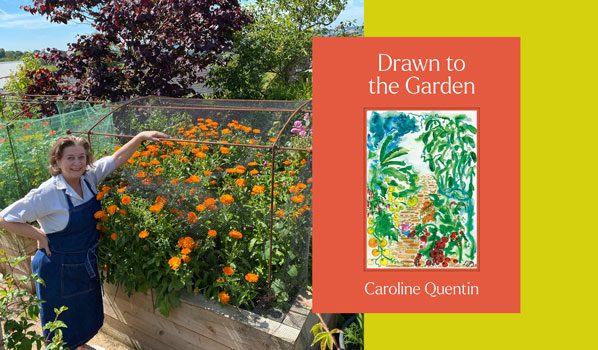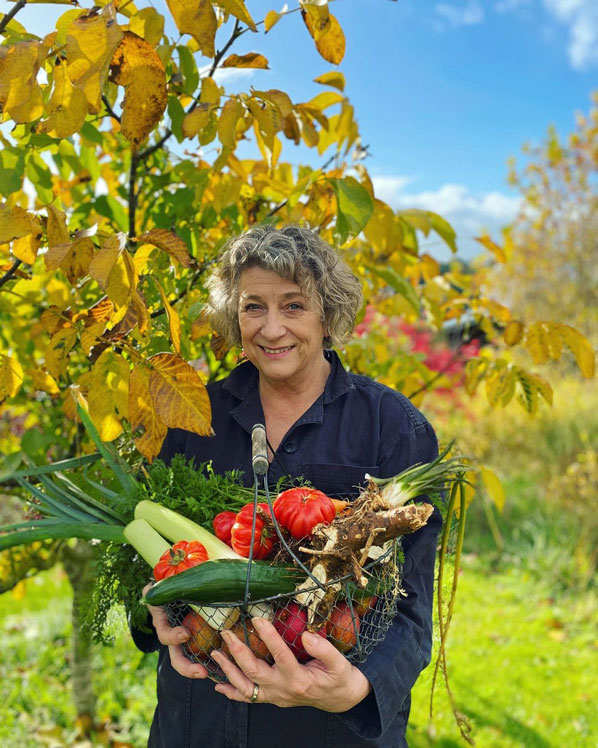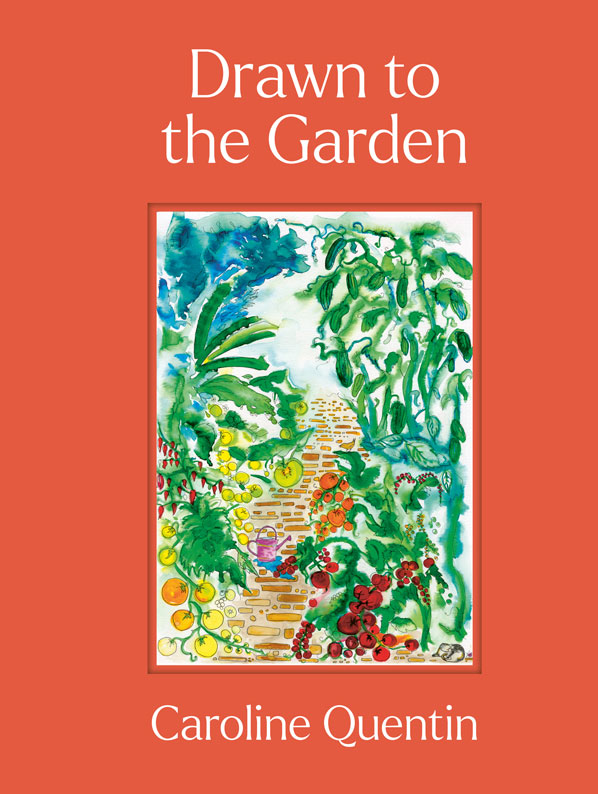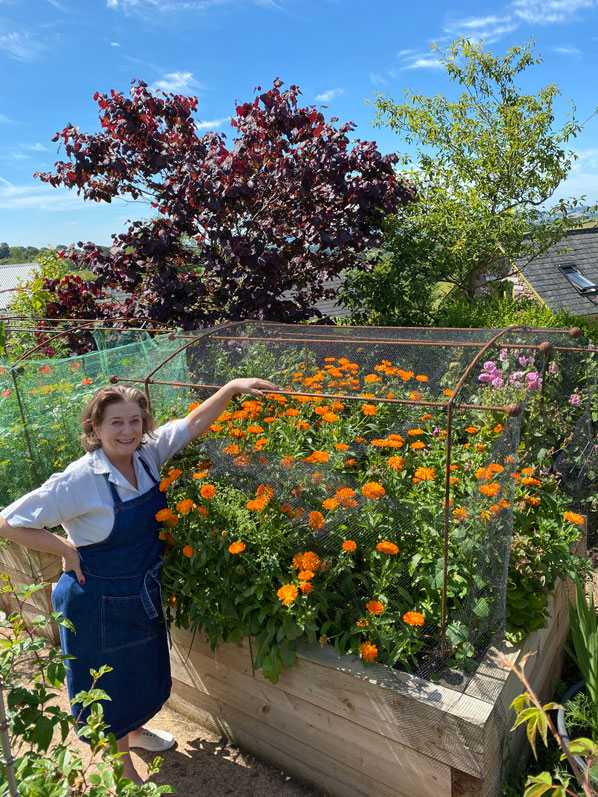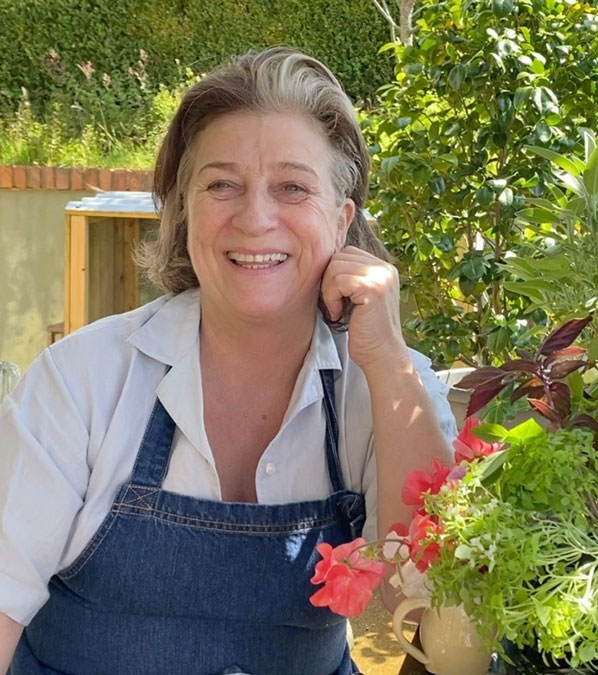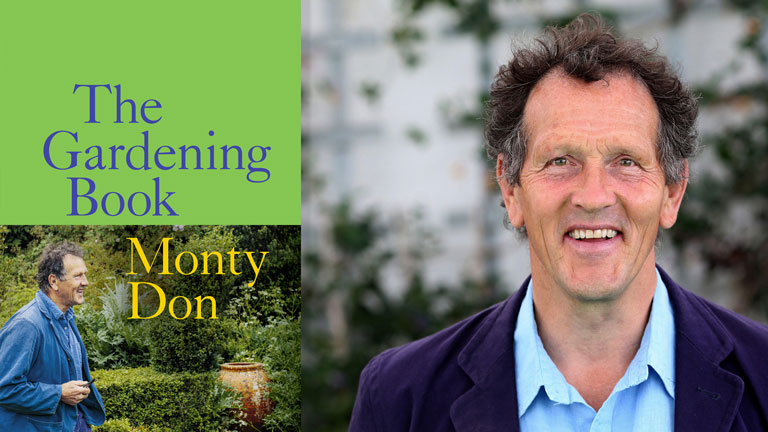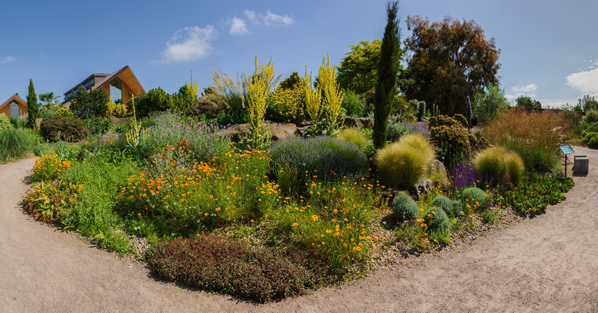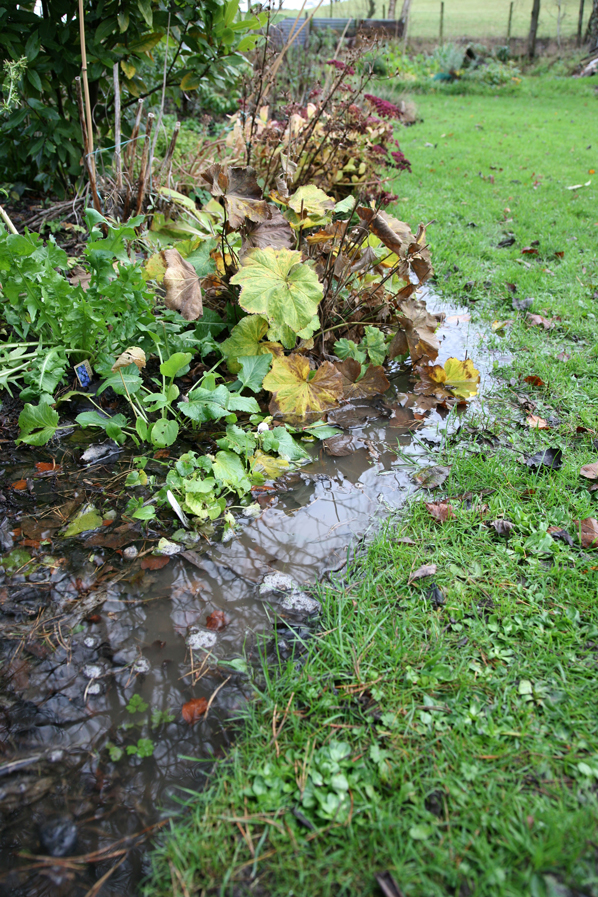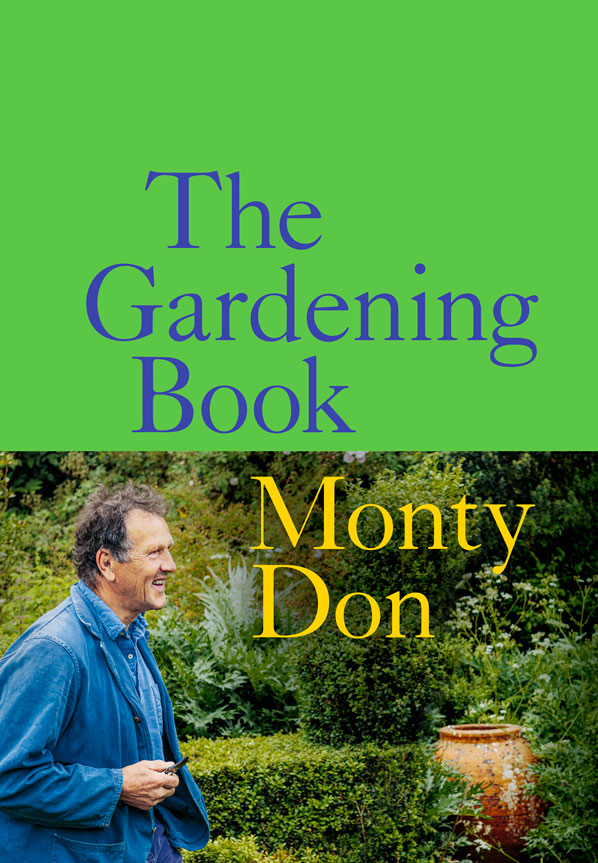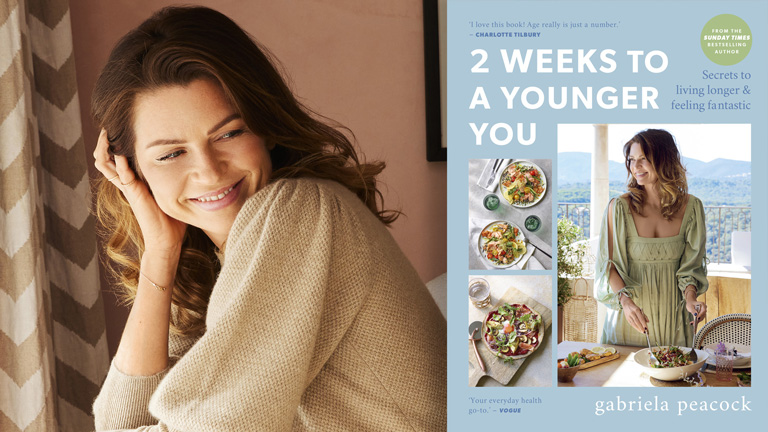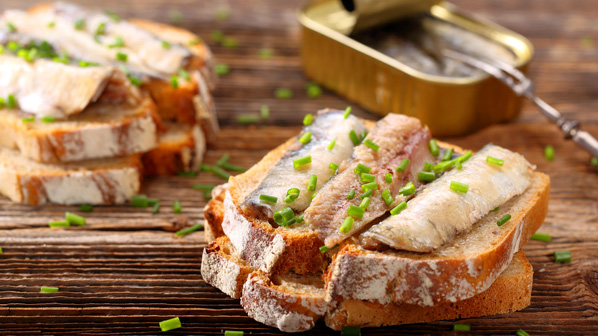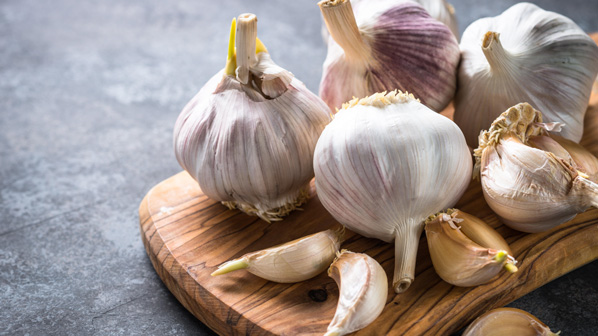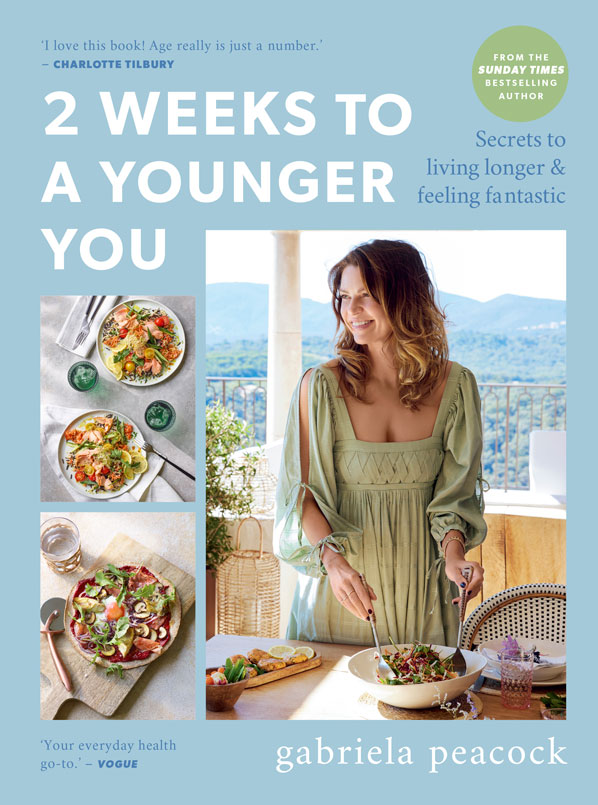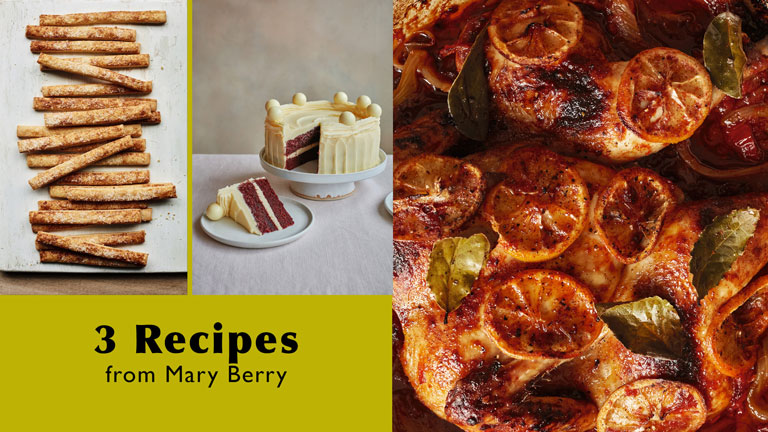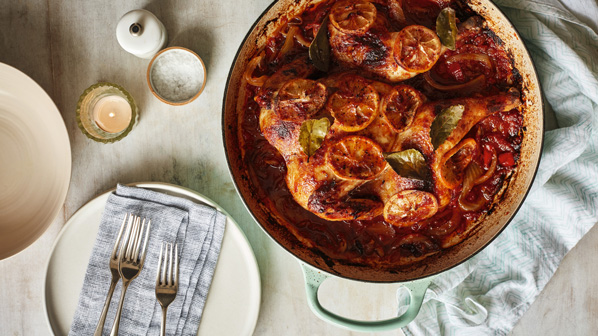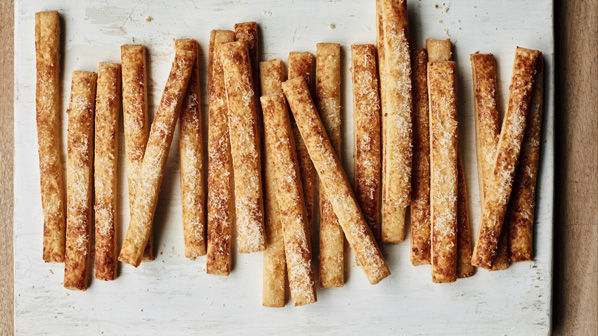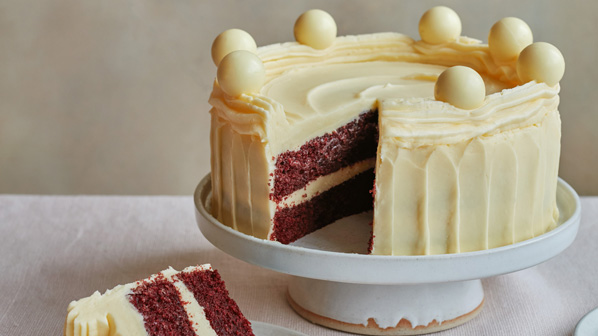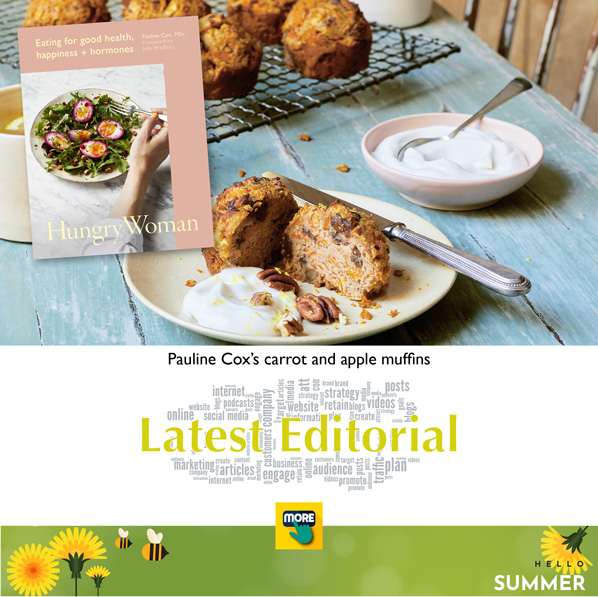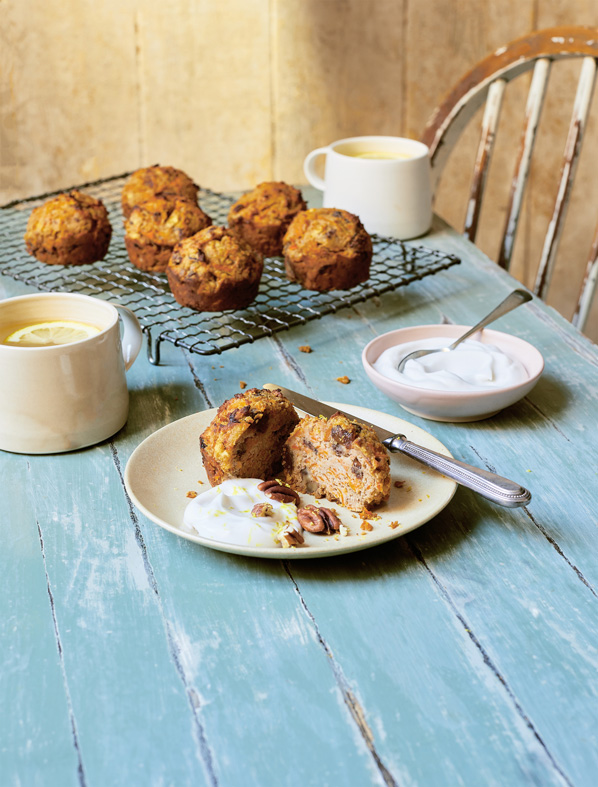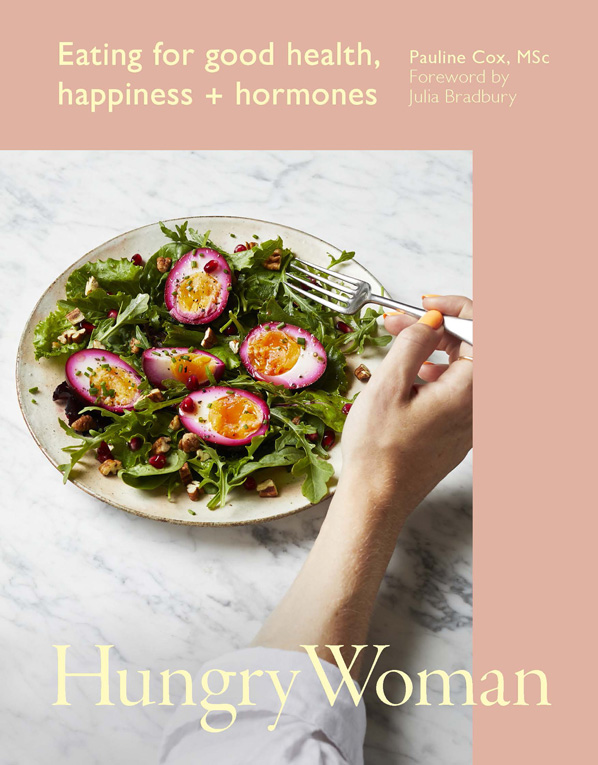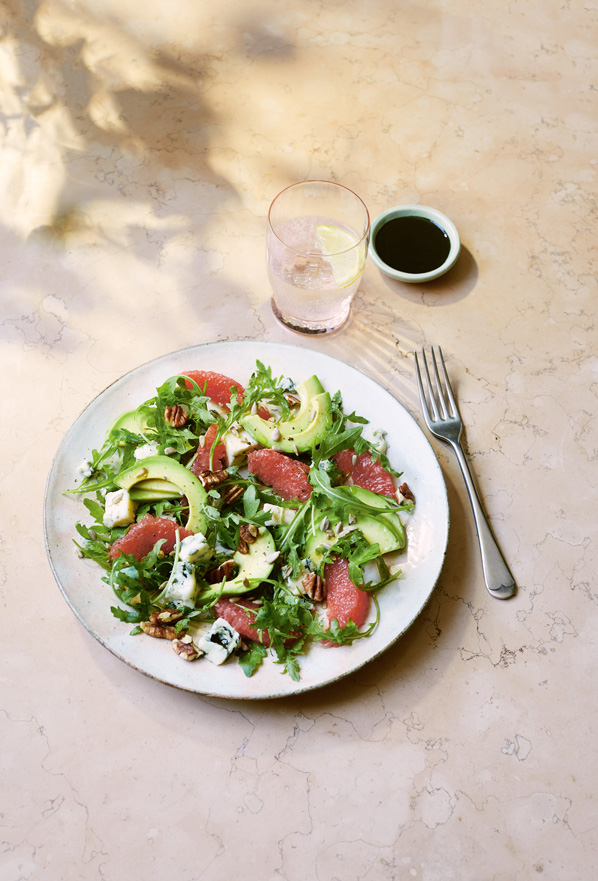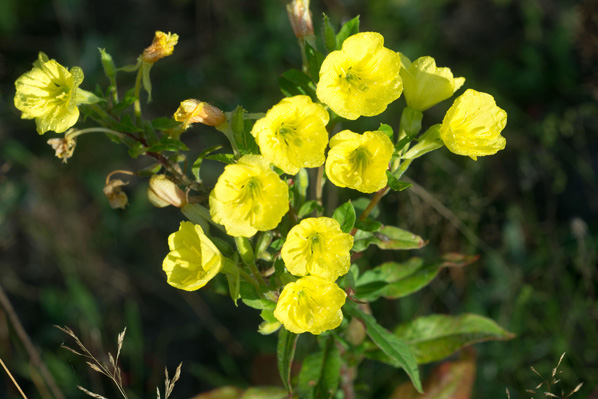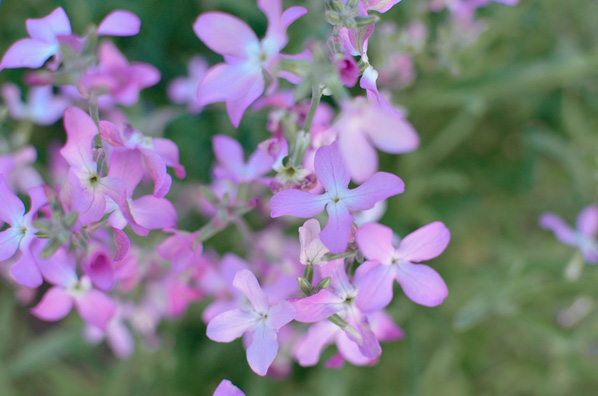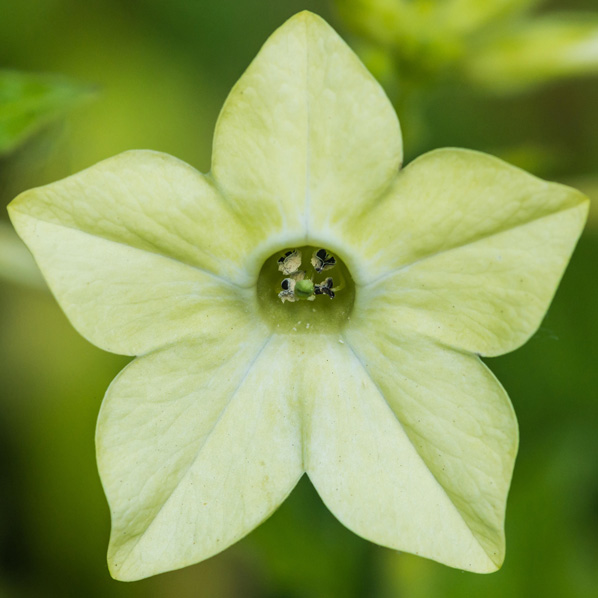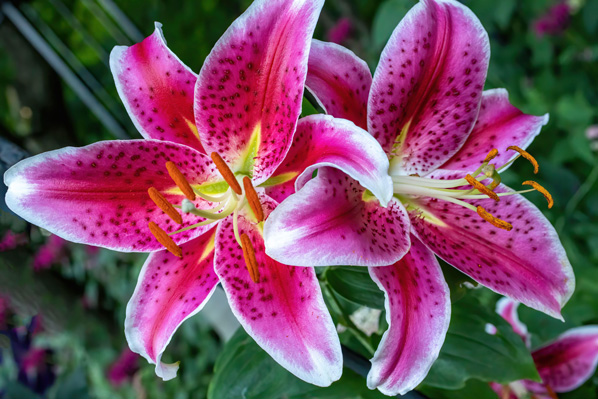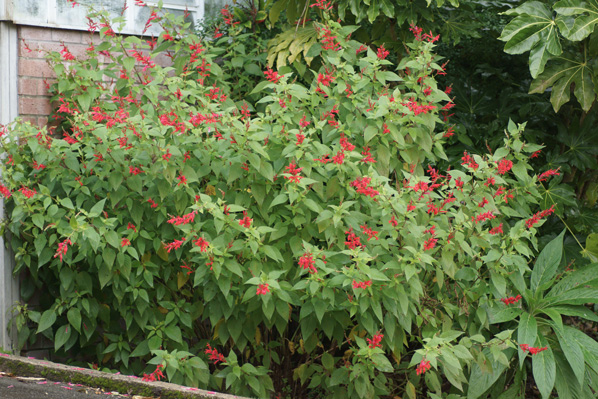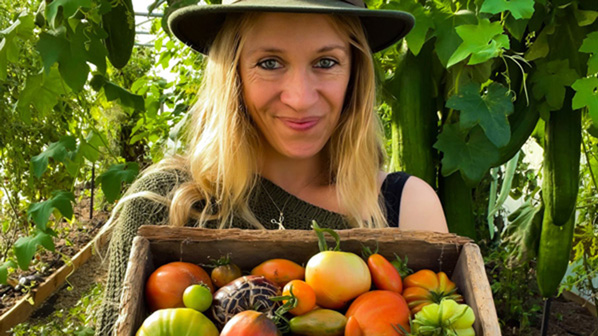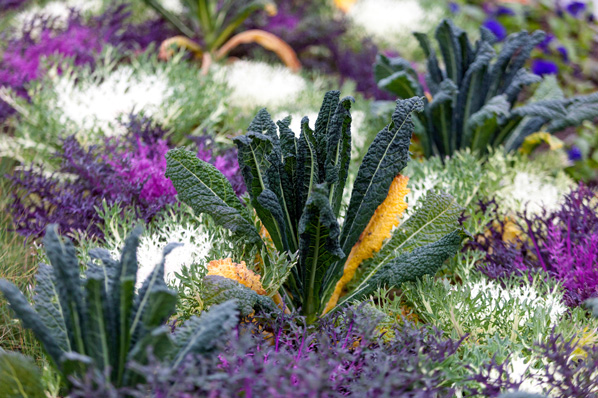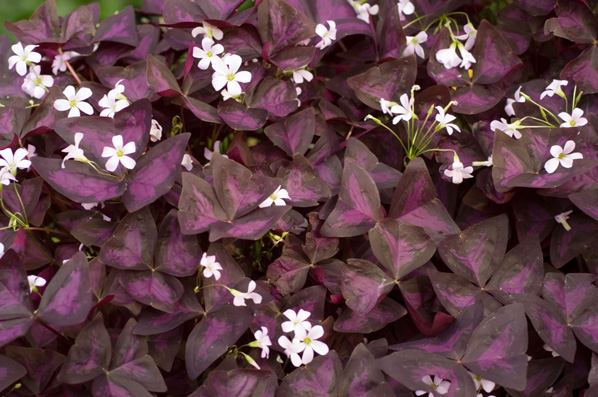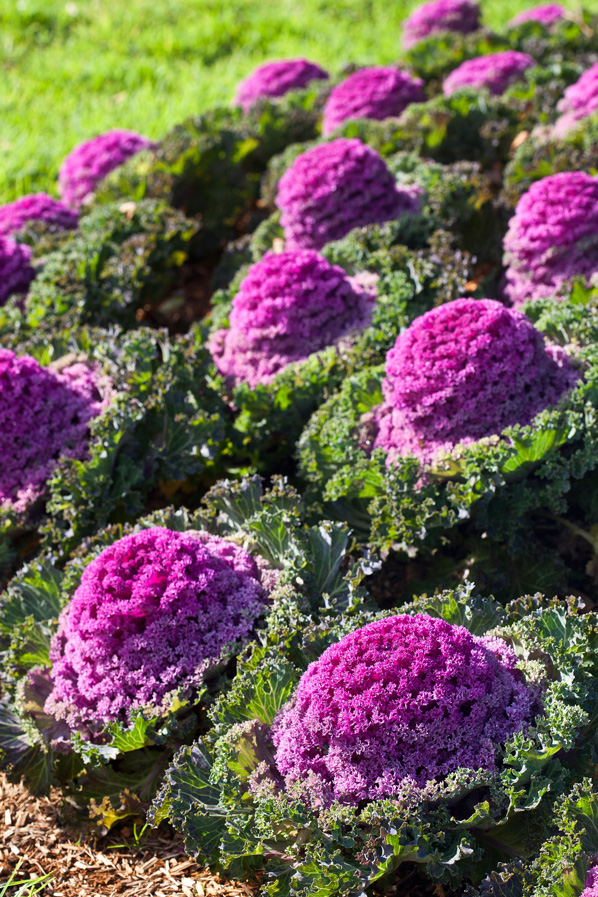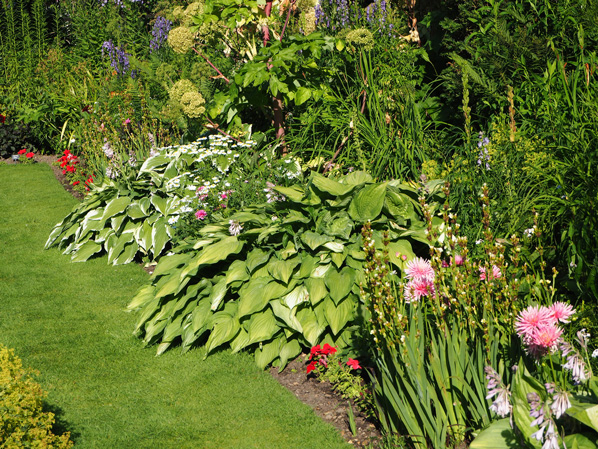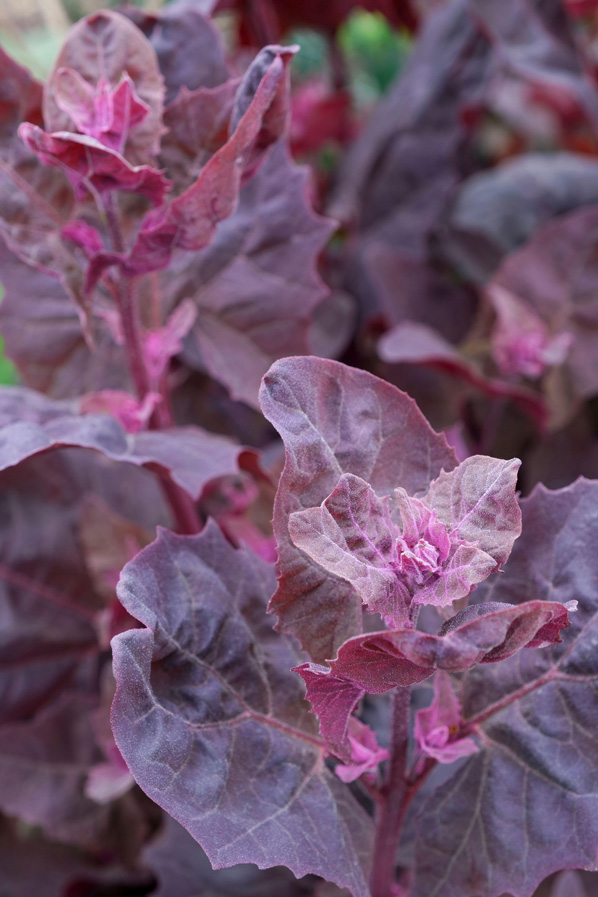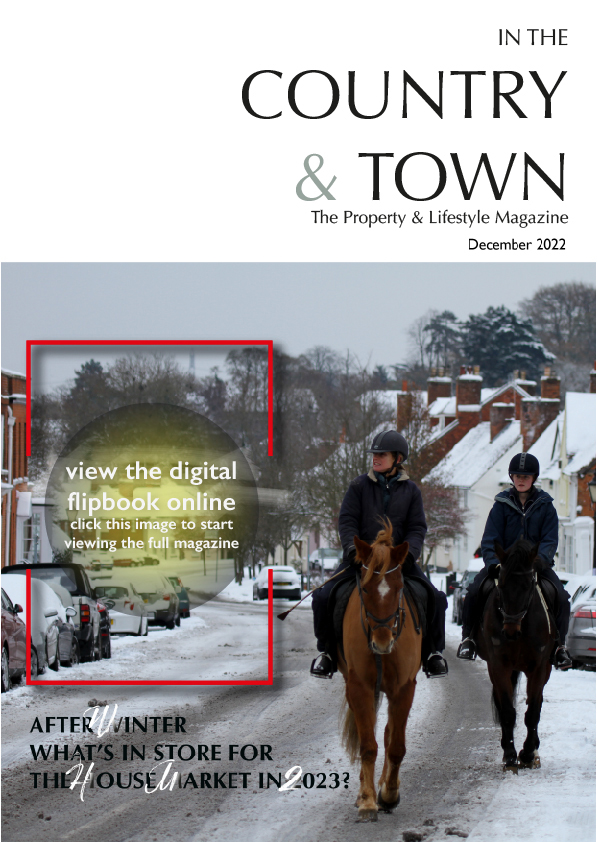BBC Saturday Kitchen star Matt Tebbutt says one of his biggest challenges is not swearing because “you forget you’re on TV” – and over eight years he’s made a few blunders.
“You have to remember you’re on telly, and you can get very comfortable and act and say things you would in your own kitchen with your friends – you could easily swear, because I’m quite sweary” says the 50 year old, who replaced James Martin as presenter in 2016.
“I called Peter Gordon [a New Zealand chef] an f****** genius, under my breath. I had to apologise, I was mortified.”
Funnily enough, Tebbutt says he later received an email from Gordon’s PA thanking him for the mention on Saturday Kitchen in 2017. “[They said], ‘Our website has crashed, would you like to come for lunch?’
“I was told off quite rightly, but since then, I always try to have a little word myself before [going live].”
Tebbutt says that while the guests do wine tastings alongside tucking into the dishes cooked up on the show, he’s careful with alcohol while on air.
“What I’ve realised very quickly is that if I drink half a glass of wine, suddenly the autocue moves around, you’re not very good at linking words together. So if I drink like a centimetre of wine in the whole show, I’d be surprised.
“We taste a lot in rehearsals,” he adds.

Tebbutt has just released his latest cookbook, Pub Food, a collection of elevated pub dishes – think mussels cooked in beer with crispy monkfish cheeks, and rump of Welsh lamb with spiced aubergine, mint and yoghurt – as well as a celebration of British pubs in general.
They are “one of the last melting pots there are in life”, says the chef, who also presents Food Unwrapped on Channel 4. “I will disappear on a Friday and go and do Saturday Kitchen. And then I’ll meet some quite famous faces sometimes, get back to the pub [near his home in Monmouthshire], and nobody gives a monkey’s! They really don’t care, and it’s great.
“You can be in the same place with very wealthy people and farmers, and the guy who empties the bins, all on the same level, and you’re all having a chat- there’s very few places you can do that anymore.
“Then if you throw good beer and conversation in the mix, and good food, I think they’re really special places.”
But local pubs are “having a really s*** time at the moment”, Tebbutt says. “They are struggling, the prices are going through the roof, energy costs, food costs, staffing. It’s all hindering the growth – they’re shutting by stupid numbers per week. I think it’s a real shame and it’s something worth trying to save.
“People need to remember that they’re not going to always be there. And if you’ve got a good one then go and support it.”
Tebbutt and his wife Lisa ran the Foxhunter Inn, Monmouthshire, for 14 years, where they championed sustainable, local fare – something that’s still his M.O. “In the mid Nineties [when working in London] seasonal and local weren’t really such a big thing. Then I moved out, set up my own place, and it seemed obvious because A, it’s going to be cheaper, and B, it’s going to be at its best.”
People are “much more in tune” with sustainable eating now, he notes.
Many of the recipes in the new book are influenced by the local produce of Monmouthshire and what he used to be on the pub menu. “Obviously, [there’s] a lot of lamb, a lot of mushrooms through foraging, crayfish dishes – because we get crayfish in the rivers – wild samphire, eel, black pudding,” Tebbutt says.
Eventually, he burned out running his own pub. “It was a very different sort of relentless business. We didn’t take a break – we did it for 14 years. I was juggling TV and the restaurant for quite some time, and then reached a point where I didn’t think it was sustainable, because I was knackered.
“Little country pubs, as lovely as they are, and everyone wants them on their doorstep, they’ve got to be supported because they’re bloody hard work to keep going.”
Tebbutt originally learned his trade in Michelin star kitchens in London, training under Marco Pierre White and Sally Clarke. And despite having to get up at 5am to film Saturday Kitchen, the hours are “a walk in the park” compared to life in a professional kitchen.
“When I first got into TV and you do 10-hour days or something, and you’d have people saying, ‘Are you OK?’, ‘Do you need to sit down?’, ‘Do you need a drink?’ – no, I’m fine! When you’re used to working 18-hour days in sometimes horrible conditions, everything [else] is a breeze.”
Tebbutt was first attracted to life in the kitchen after reading White Heat by Marco Pierre White when he was 16. “It just made chefs look really cool and sexy and really, really rock and roll. It was the first cookbook that had this dirty-looking, kind of rugged chef producing the most beautiful place of food.
“That juxtaposition between the sweat and the blood and tears at the back of house and the control at the front – I just kind of fell in love with it.
“Kitchens, they’re a bit like joining the army. You go in at the bottom, you keep your head down, you find your way and you slowly build yourself up. It’s brutal but you learn a lot.”
But some head chefs do take it too far. He remembers going to eat in one restaurant when he was working in London by a very famous chef at the time; “They had an open door and we saw this chef absolutely, continually tearing his kitchen staff apart. To the point where it was all heads down, they looked broken.
“And then you get the food, it looks beautiful, but you don’t want to eat it because of the misery that’s gone into it.
So now, “I don’t like the chef, I won’t eat their food.”
Matt Tebbutt’s Pub Food by Matt Tebbutt is published in hardback by Quadrille on August 29, priced £26. Photography by Chris Terry.

And Now Some Recipes From Matt
Matt Tebbutt’s chocolate pudding and mascarpone ice cream recipe
By Lauren Taylor
“This is quite a light, delicate chocolate cake, with a deliciously molten interior. The star anise is optional if you’re not a fan,” says TV chef Matt Tebbutt.
Chocolate pudding and mascarpone ice cream
Ingredients
(Makes 10-12 little puddings)
For the mascarpone:
350ml water
150g caster sugar
Finely grated zest and juice (about 75ml) of 2 unwaxed lemons
400g mascarpone cheese
For the chocolate puddings:
250g dark chocolate, broken into pieces
250g unsalted butter
125g caster sugar
1 tsp freshly ground star anise, sieved (remove the seeds from the pod, and crush in a pestle and mortar), optional
5 medium free-range eggs
5 medium free-range egg yolks
50g plain flour
a pinch of salt
Good-quality cocoa powder, to serve (optional)
Method
1. Start both the ice cream and cake the day before. For the ice cream, simply boil the water, sugar and lemon zest in a saucepan. Once the sugar has dissolved, remove from the heat and stir in the mascarpone with the lemon juice. Cool and chill in an ice-cream maker (be careful not to over-churn). Freeze in a suitable container.
2. For the chocolate pudding, melt the chocolate and butter in a bowl over a saucepan of hot water. In a bowl, whisk the sugar, powdered anise, whole eggs and egg yolks until light and pale. Slowly add the melted chocolate to the egg and sugar mixture. Carefully fold in the flour and salt. Pour the mixture into little 200ml non-stick moulds, filling them halfway. Chill in the fridge overnight.
3. Next day, preheat the oven to 180°C/350°F/Gas 4.
4. Remove the pudding batter from the fridge, bring to room temperature and bake in the preheated oven for 10 minutes, no longer. The outside of the cake mix should be set firm yet the middle will remain molten.
5. Serve the cake hot with the mascarpone ice cream and a dusting of cocoa powder, if liked.

Matt Tebbutt’s smoked haddock souffle tart
By Lauren Taylor
“Lighter than a traditional quiche, but just as satisfying. Always source naturally smoked haddock,” says TV chef Matt Tebbutt.
Smoked haddock souffle tart
Ingredients
(Serves 4)
2 smoked haddock fillets
1.5 litres whole milk
1 bunch fresh dill, chopped
60g unsalted butter, melted
50g strong Cheddar, grated
1 tbsp crème fraîche or double cream
3 free-range eggs, separated
1 ready-made 22cm round shortcrust pastry case
Salt and pepper
To serve:
Mixed green salad dressed with olive oil and lemon juice
Lemon wedges
Method
1. Preheat the oven to 200°C/400°F/Gas 6.
2. Place the haddock and milk in a large saucepan and poach for 8–10 minutes or until cooked through.
3. Remove the fish, leave to cool and break the haddock into flakes. Place the haddock in a bowl and stir in the dill, melted butter, cheese and crème fraîche and season with salt and pepper. Add the egg yolks and mix to combine.
4. In a separate bowl, whisk the whites until stiff peaks form. Fold the egg whites gently through the haddock mixture.
5. Spoon the haddock mixture into the tart shell and bake for 35 minutes or until the filling has risen and the pastry is golden.
6. Serve the tart in slices with a green salad, and a lemon wedge for squeezing over.

Matt Tebbutt’s rack of lamb recipe
By Lauren Taylor, PA
“I don’t really need to comment much on this one – it’s heavenly, early summer on a plate!” says TV chef Matt Tebbutt.
Rack of lamb with baby gem lettuce, peas, mint and bacon.
Ingredients
(Serves 4)
Olive oil
2 x 8-bone racks of lamb
Salt and pepper
4 sprigs fresh thyme, leaves picked
75g unsalted butter
4 medium baby gem lettuces, halved
200g pancetta or bacon, diced
4 garlic cloves, peeled and thinly sliced
100g fresh shelled peas, blanched and refreshed
800ml lamb stock
4 sprigs fresh mint, leaves picked and torn, plus extra to garnish
Method
1. Preheat the oven to 200°C/400°F/Gas 6.
2. Heat 1 tablespoon of olive oil in a large frying pan. Season the lamb fat with salt and pepper, then fry fat side down for a few minutes over a high heat until browned.
3. Turn over, put into a roasting tin and sprinkle with some of the fresh thyme. Roast in the preheated oven for 15–20 minutes or to your liking. Leave to rest for 10 minutes before serving.
4. In another frying pan, add 15g of the butter and colour off the baby gem lettuces, cut side down, in the foaming butter. Throw in the diced pancetta, the garlic and remaining thyme, and sauté for a few minutes until coloured. Add the peas and pour in the lamb stock. Bring to the boil and simmer for 2–3 minutes to warm everything through.
5. Cut the lamb into chops and place on a large serving dish. Throw the mint into the simmering stock along with the remaining butter. Stir in to enrich the sauce and give it a good sheen. Season carefully, as the pancetta may already have seasoned the stock sufficiently. Spoon around the lamb racks and serve garnished with the extra mint.













